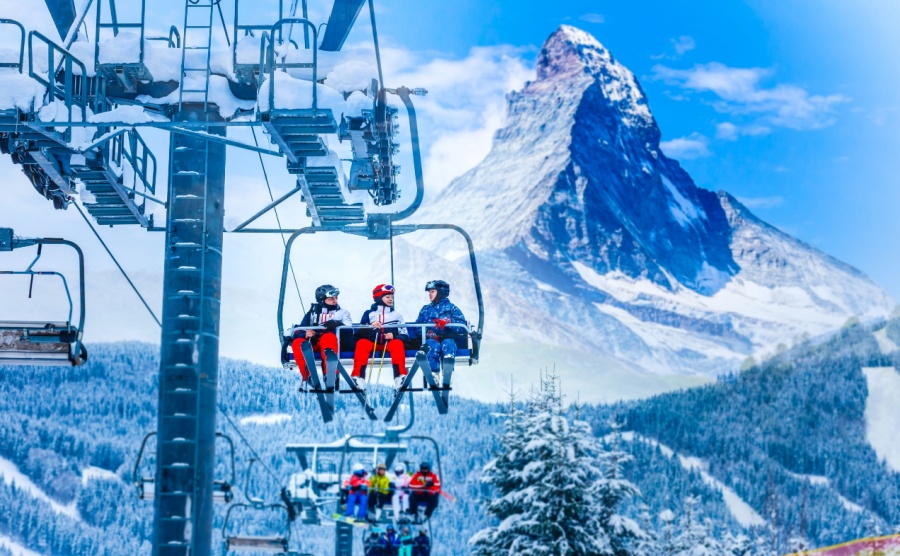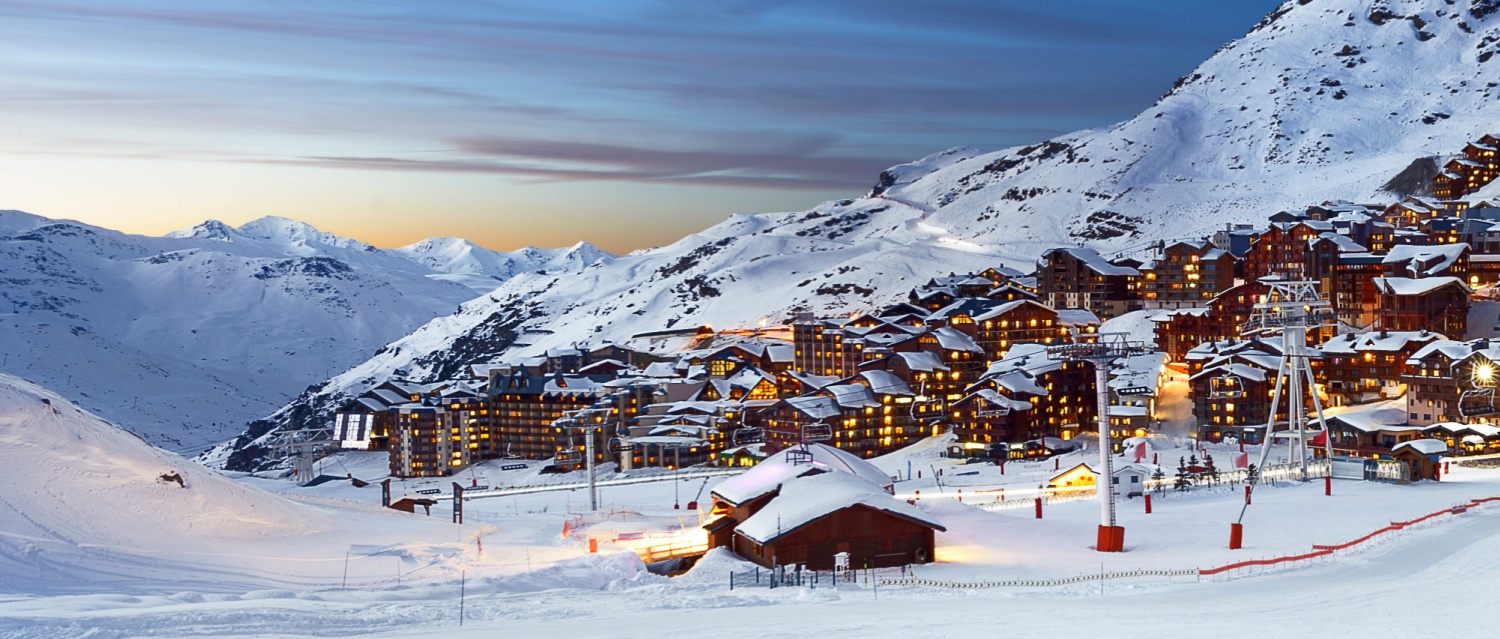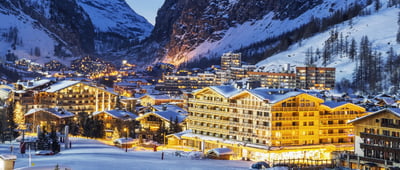Buying a ski property in the Alps offers a perfect blend of personal retreat and investment potential.
For first-time buyers looking at a second home in the mountains, the choice often comes down to two options: a chalet or an apartment. Each offers distinct advantages depending on lifestyle, rental goals, and long-term financial considerations.
This guide explores the key factors to help you make the right choice, focusing on the French Alps while considering broader European trends.

Enjoy hundreds of kilometers of pristine skiiing
It’s a question of lifestyle
Your ideal ski property should reflect how you plan to use it.
Chalets offer privacy, space and a traditional Alpine experience. They are ideal for families seeking a cosy retreat or retirees looking for a peaceful, long-term getaway.
Many high-end chalets in Courchevel and Méribel come with private gardens, fireplaces and dedicated ski storage. However, they require more upkeep and are often located slightly outside resort centres.
Apartments provide convenience, central locations and ease of maintenance. Digital nomads or frequent travellers might find apartments in Zermatt’s pedestrianized centre or Méribel’s ski-in/ski-out developments more appealing.
Many modern Alpine apartments are part of serviced residences, offering spa facilities, concierge services and communal amenities.
In demand for different reasons
Property prices in the Alps vary significantly between resorts and property types. According to recent reports from Knight Frank and Savills, Chalets in top-tier resorts like Courchevel 1850 and Zermatt can exceed €10 million, though mid-range options in Méribel or Chamonix can start at around €1.5 million. Whereas apartments in sought-after locations tend to have a lower entry price, with high-end units in Courchevel ranging from €700,000 to €3 million.
The demand for ski properties remains strong, driven by limited supply and increased interest from international buyers. For the past 13 years, they’ve seen consistent 2% price grwoth, with that doubling to 4% growth in the past three years.
Managed residences and serviced apartments have also gained popularity, particularly among investors seeking reliable rental income. Serviced properties also lend prestige to a home, making it useful for business networking trips.
For those considering rental returns, apartments in well-located developments often achieve higher occupancy rates due to ease of management and proximity to ski lifts. Chalets, however, can command premium weekly rates, particularly during peak season.

Enjoy a premium service at apartments with concierge desk
The costs of getting help
If you plan to rent out your property, understanding the logistics is crucial.
Chalets require hands-on management or a property management company to handle guest services, maintenance and marketing. This adds costs but allows for premium rentals, especially in resorts like Zermatt, known for attracting high-net-worth clientele.
Apartments are often part of managed rental programs, where operators handle bookings, maintenance and services. This is a lower-effort option, appealing to those who want passive income without the hassle of overseeing the property.
Legal and tax considerations
Owning property in the French Alps—or any European ski resort—comes with tax and legal obligations.
In France, expect to pay notary fees of around 7-8% for resale properties and 2-3% for new builds. Switzerland has stricter foreign ownership rules, while Austria and Italy have their own regulations.
Rental earnings are also subject to local taxes. France offers favourable tax incentives under the LMNP (Loueur en Meublé Non Professionnel) scheme, which allows deductions on rental income, but this is something you should discuss in detail with your accountant.
If you sell, capital gains tax applies, but exemptions increase with ownership duration.
In France, properties over €1.3 million are subject to the IFI (Impôt sur la Fortune Immobilière). The tax is banded by the value of your assets but can reach as much as 1.5% if your portfolio exceeds €10m.
Consulting a specialist can help navigate these complexities, ensuring your purchase is structured tax-efficiently.
Maintenance and running costs
Beyond the purchase price, consider the long-term costs of ownership.
Chalets require higher maintenance, particularly in heavy snowfall areas where regular roof clearing and heating are essential. Also, the less accessible they are the more expsnive they become. Utilities and upkeep can add significantly to annual costs.
Apartments typically have lower running costs, though they may include service charges for shared facilities.
Managed residences often bundle maintenance, insurance and rental management into a single fee. That certainly makes things easier, but you will have less control of the property, and you will lose the ability to negotiate better rates with individual service providers.

A more refined apres-ski
Naturally, which option is right for you will come down to your desires for the property. Chalets prioritise space, privacya and the classic Alpine lifestyle. Apartments offer convenience, easy rentals and a lock-up-and-leave option.
Both options are fantastic opportunities, and the right choice depends on your lifestyle, budget and investment goals.
As an example of what a ski property that straddles the line between apartment and chalet, take a look at the Fleur des Alpes development in Méribel.






